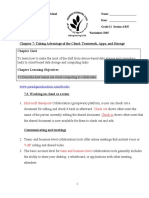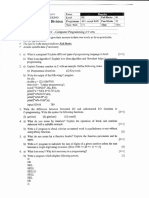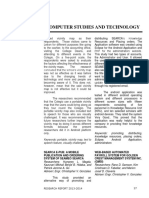0% found this document useful (0 votes)
63 views11 pagesCollaborating With Cloud Via Web-Based Tools
The document presents an overview of cloud collaboration, highlighting its benefits such as real-time collaboration, accessibility, and cost-efficiency. It discusses popular tools like Google Workspace and Microsoft 365, along with communication and project management platforms, emphasizing their features and advantages. The conclusion underscores the importance of cloud collaboration for enhancing teamwork and productivity, while also addressing security measures in cloud environments.
Uploaded by
zdeshmukh26Copyright
© © All Rights Reserved
We take content rights seriously. If you suspect this is your content, claim it here.
Available Formats
Download as PDF, TXT or read online on Scribd
0% found this document useful (0 votes)
63 views11 pagesCollaborating With Cloud Via Web-Based Tools
The document presents an overview of cloud collaboration, highlighting its benefits such as real-time collaboration, accessibility, and cost-efficiency. It discusses popular tools like Google Workspace and Microsoft 365, along with communication and project management platforms, emphasizing their features and advantages. The conclusion underscores the importance of cloud collaboration for enhancing teamwork and productivity, while also addressing security measures in cloud environments.
Uploaded by
zdeshmukh26Copyright
© © All Rights Reserved
We take content rights seriously. If you suspect this is your content, claim it here.
Available Formats
Download as PDF, TXT or read online on Scribd
/ 11




























































































